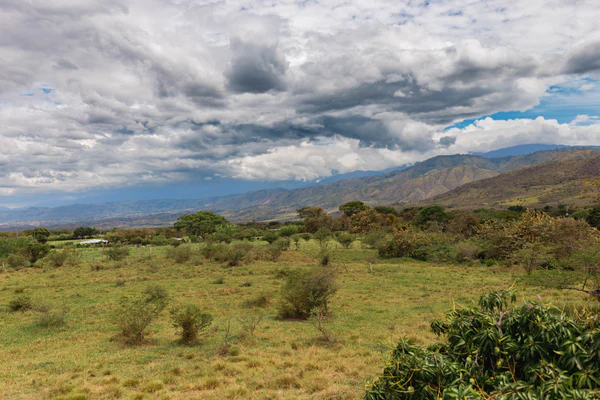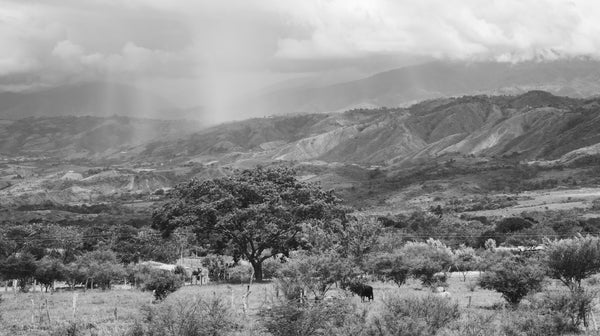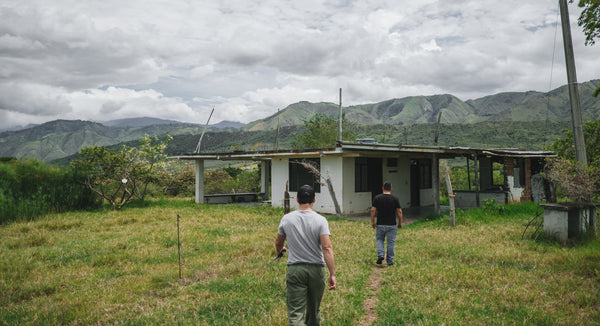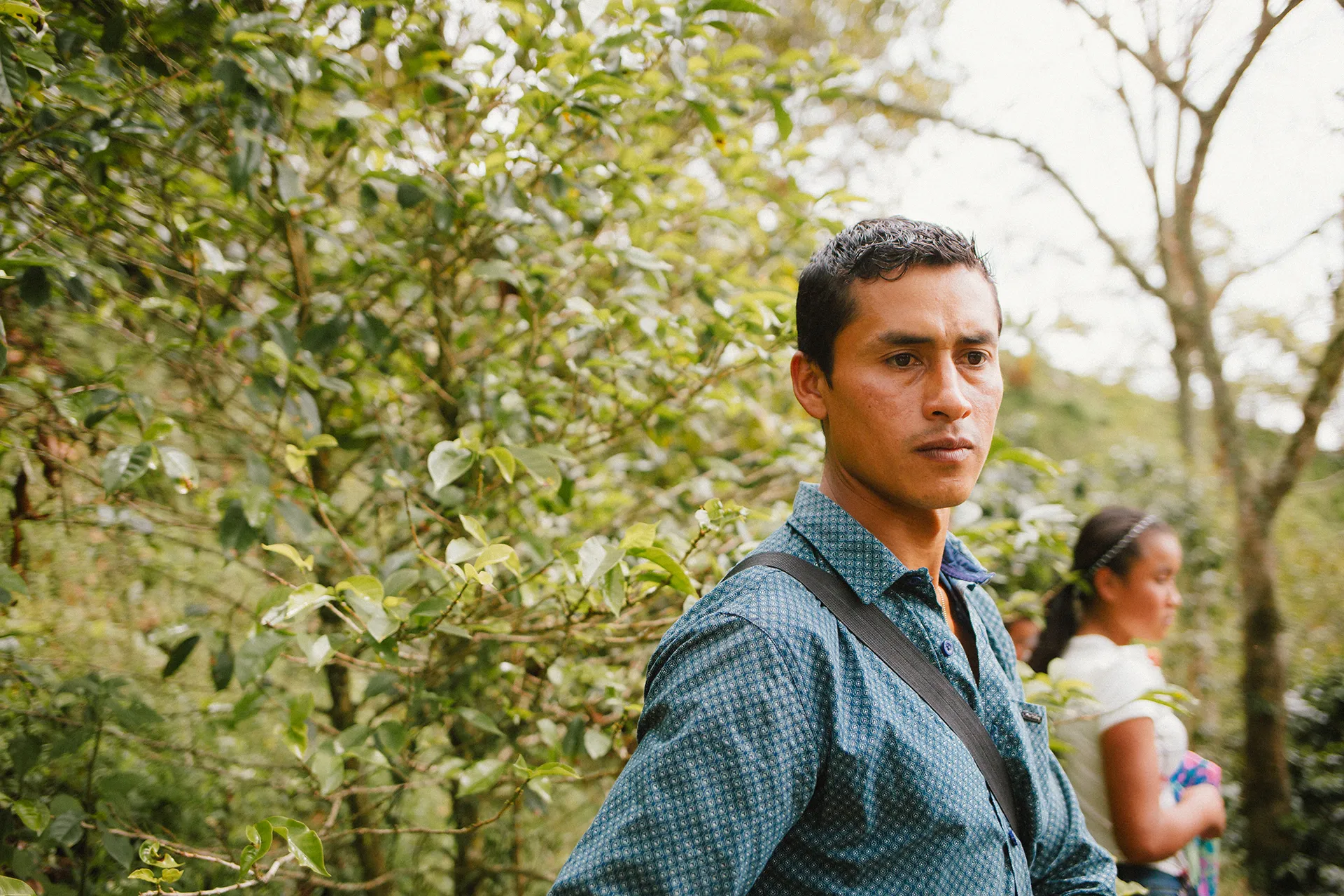“La Cueva del Oso” in Phases
Phase 1: Early in 2022 we will begin construction on a centralized wet mill, the likes of which (to our knowledge) exists nowhere else in the world. Instead of the traditional way of buying dried parchment in Colombia, we will instead be buying fresh cherry from farmers and processing it ourselves. Furthermore, we will be able to maintain full lot traceability and transparency throughout processing. In effect, this means that when each producer delivers us cherry, we will still process their coffee as a separate microlot and only after a full quality analysis will we make the decision to blend it or keep it separate thereby ensuring that all the names you have come to know and love will not be lost by default to the obscurity of large field blends of dozens of producers’ coffees.
Moreover, we will not expect farmers to come to us. We will go to them. We will schedule a collection time in each of the municipalities we choose to work. Producers will simply have to bring cherry into town and be paid, in full, on delivery. We believe this is a win/win/win for producers, Osito and our clients. Read on to better understand why.

Phase 2: Simultaneously, we will begin construction on our new headquarters on the same site. Not only will this have office space for our growing staff but our desire is to have all of the following incorporated:
- Lab for coffee analysis (physical and sensorial)
- Lab for cacao analysis
- Analytical laboratory for microbiology (to better understand and execute our ferments)
- Guest rooms (for all of you!!)
- Small coffee shop/café to serve coffee, drinking chocolate and light bites to our guests
Phase 3: Later in 2022/23, we will begin construction on a factory for organic fertilizer. Though internal prices for coffee are currently ~2.5x higher than they were this time last year, costs (and specifically fertilizer costs) have risen in lock step such that producers in Colombia are not earning any more than they were when prices were floating just above $1 USD/lb. The fertilizer we will be producing on site will be sold to our network of farmers at a discount to the market, on credit to be paid in coffee deliveries and completely interest free. This is essentially a riff on an age-old model executed by large cooperatives but done so as a benefit to producers and not in a predatory way that makes the poor poorer and the rich richer.
We will be selling a better product to farmers for less.

Phase 4: Sometime in 2023/24, we will begin construction on a centralized fermentory for cacao. This will essentially replicate the model we will have in place for coffee but instead, for the wonderful cacao producers of Huila. Once again, we will go into the municipalities, buy whole pods (not just cacao en baba {wet}) and process it at a central location prior to export/import. It is also likely that by this time, we will be growing our own cacao on this same plot of land in Altamira.
This model of fermenting cacao at a centralized station is not only commonplace in Colombia and other countries but is the recommended way of processing cacao when high-quality is the goal. Small batch and single farm cacaos are somewhat untenable because the volume required for a good and full ferment is more than most single producers can deliver at once.
Our fermentory will simply have moderate improvements on a proven model.
Phase 5: As funding comes through, we will begin construction on our own dry mill. One of our biggest challenges as a small, quality-focused exporter is finding space in a good dry mill and at the exact time we need it. This is, of course, separate from the simple desire to have greater control over the quality of our exported products.
Unfortunately, this is also the most expensive phase of this project and thus, the timeline is a bit unknown at this moment.

Why is this important…nay, why is this absolutely critical?
As you might imagine, the first phase is the most vital for this whole project to succeed. While centralized wet mills are not a new thing in the world of coffee, they are still a novelty in Colombia. To our knowledge, there is no other entity buying cherry in this way in Huila apart from a handful of larger producers who may buy some from their neighbors. However, that is usually sold under their own name as the producer and little to no credit is given to the persons that actually cultivated the raw material.
The way we and others buy coffee currently can only be described as a slight improvement on commodities trading for the benefit of smallholder agriculture; Commodity Plus or Commodity 2.0 might be a better label than “Specialty Coffee”. We may pay higher prices than most but our process is slow.
As I write this, a farmer can grow their coffee for 9 months, fully process it in 5-10 days, deliver it to a local coop and get paid in full on delivery of dry parchment for something above $2 million COP/carga for standard (commodity) coffee. Osito will absolutely pay them more but we ask them to do a better job of fermenting and drying the coffee which takes more time and effort. Then we ask them for an additional one to two weeks while we take the time to analyze the moisture, water activity, UV, yield factor and have numerous cuppers taste it before we can commit to paying a certain price. This causes major cash flow issues for farmers. We know that we currently lose out on a certain amount of coffee that is sold to other local merchants simply because larger organizations who are unconcerned with quality will be faster with payments though they are less in total. Cash flow is the reigning king.
To be clear, our way of doing things is technically better for producers…but only slightly…and only less so as the commodity market goes up.

If we make a transition to buying cherry instead, we are convinced that the vast majority of our existing producer partners will be thrilled to make that change with us. For those that do not want to deliver cherry, we will still be waiting with open arms for their dry parchment. However, we do believe this new model only serves to benefit them.
- Instead of waiting up to 45-50 days from the moment the cherries are harvested to the moment of being paid in full, producers can be paid within literal hours of the cherry being picked from the trees.
- On both a fixed and percentage basis, producers will be making far higher margins.
- There will be less labor/cost for producers and they can focus all their energy on plant management and harvesting. Moreover, there will be less necessary investment in and maintenance of farm infrastructure.
Who doesn’t want to be paid more for doing less?
Why is this model good for roasters?
Simply put, Osito will be able to sell coffee that is:
- More traceable and more “sustainably-sourced,”
- That is of a higher and more consistent quality
- For prices that are highly-competitive with the rest of the specialty coffee market, if not far better.
In a world with extreme volatility with regard to pricing, quality and availability, we feel this is a hedge we all need; producers, traders and roasters alike.
We believe this model has the potential to be disruptive in the industry at large. We have often tagged ourselves as a “farmer first” company meaning we have a keen understanding that we will not be profitable and sustainable as a business without first making sure farmers are happy with our business dealings and feel well cared for. However, anything we have done well on behalf of those farmers up until this moment feels small compared to this project. The industry is broken and we hope to be part of its reconstitution. This is our mark, this is our legacy and this is our passion; to make coffee better in the way that it tastes, in the way that it’s produced and in the way that it is traded. For now, we see no better way to do that in Colombia apart from this project.
While this is the biggest step we’ve taken to date towards true specialty coffee, this is also only just the beginning.
We hope to welcome you all soon to La Cueva!!
